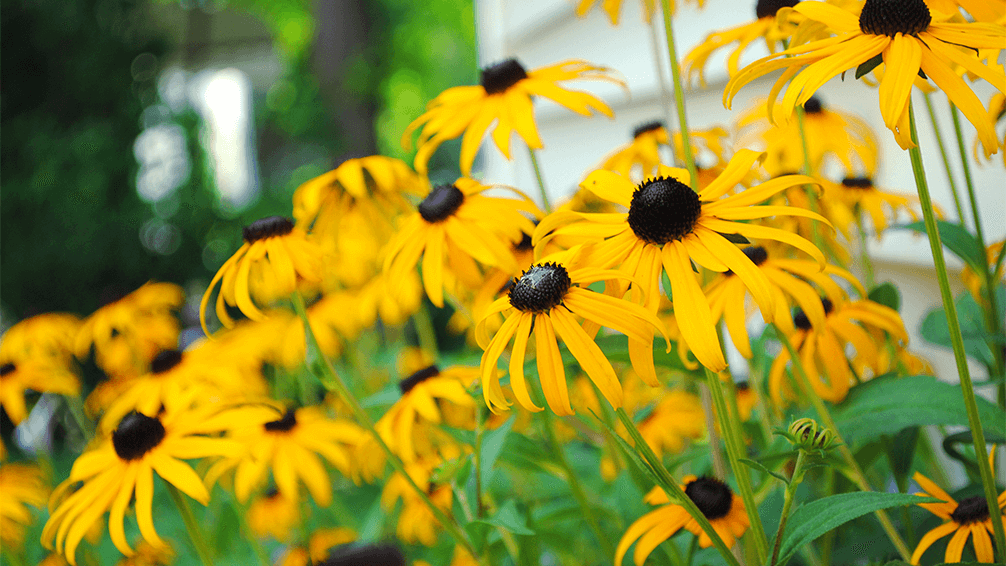
Blacked Eyed Susan
Adding a Touch of Sunshine: Black-Eyed Susan in Landscaping
When it comes to brightening up your garden with effortless charm, few flowers can compete with the Black-Eyed Susan (Rudbeckia hirta). These cheerful, daisy-like blooms are known for their vibrant yellow petals and dark brown centers, bringing a splash of sunshine to any landscape. Whether you’re an experienced gardener or a novice, incorporating Black-Eyed Susans into your outdoor space can be both rewarding and visually stunning.
Why Choose Black-Eyed Susan?
Black-Eyed Susans are beloved for their resilience and ease of care. These hardy perennials are drought-tolerant, deer-resistant, and thrive in a variety of soil types. They bloom from mid-summer to early fall, ensuring a long-lasting display of color. Additionally, they attract pollinators like bees and butterflies, making them a great choice for eco-conscious gardeners looking to support local wildlife.
Landscape Design Ideas
- Mass Planting: Create a bold statement by planting Black-Eyed Susans en masse. Their bright blooms create a stunning visual impact when planted in large groups, perfect for borders or creating a focal point in your garden.
- Pollinator Gardens: Combine Black-Eyed Susans with other pollinator-friendly plants like coneflowers, milkweed, and lavender to create a haven for bees and butterflies. This not only adds beauty but also supports local ecosystems.
- Mixed Borders: Pair Black-Eyed Susans with complementary plants like purple salvias, blue asters, or ornamental grasses to create a vibrant and dynamic border. The contrasting colors and textures will enhance the visual appeal of your garden.
- Containers and Pots: For smaller spaces or patio gardens, Black-Eyed Susans can thrive in containers. Their striking blooms will add a pop of color to your outdoor living areas.
Care and Maintenance
Black-Eyed Susans are remarkably low-maintenance. Here are some tips to keep them thriving:
- Sunlight: Plant them in full sun to partial shade for the best blooms.
- Soil: While they are adaptable, well-drained soil will give you the best results.
- Watering: Water regularly during dry spells, but avoid overwatering as they prefer slightly dry conditions.
- Deadheading: Remove spent flowers to encourage continuous blooming and to keep the plant looking tidy.
- Winter Care: In colder climates, mulch around the base of the plants to protect them during the winter months.
Final Thoughts
Black-Eyed Susans are more than just a pretty face in the garden. Their bright, cheerful flowers bring joy and warmth to any landscape, and their easy-going nature makes them a favorite among gardeners. Whether you’re looking to create a vibrant flower bed, support local pollinators, or simply add a touch of sunshine to your outdoor space, Black-Eyed Susans are a fantastic choice.
Ready to brighten up your garden with these sunny blooms? Let your garden shine with the effortless beauty of Black-Eyed Susans!